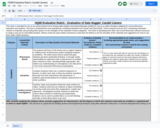
dlkvnsdkof
- Subject:
- Agriculture, Food and Natural Resources
- Career and Technical Education
- Material Type:
- Alternate Assessment
- Author:
- Frank Devereaux
- Date Added:
- 02/20/2024

dlkvnsdkof

One of the largest healing arts sanctuaries in the country, a quilt of dreams, using dance to challenge body norms and a graphic artist’s illustrations about ADHD go viral.
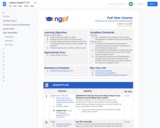
Learning Objectives
Students will be able to
Explain the advantages of a 401(k).
Analyze who has access to 401(k) accounts.
Compare different types of retirement accounts, including Roth IRAs, traditional IRAs, 401(k)s, and pensions.
Simulate signing up for a 401(k) or IRA account.
Approximate Time
Lesson length: 115 mins

Students use data on space debris, analysis of rates, and regression in order to model situations.
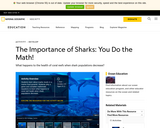
Students learn about trophic levels in a marine food pyramid. Students play a game and complete mathematic equations to learn what happens to coral reef health when shark populations decrease.
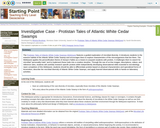
The Protistan Tales of Atlantic White Cedar Swamps WebQuest features a guided exploration of microbial diversity. It introduces students to the extreme habitat of the Atlantic White Cedar Swamp and encourages them to explore characteristics of the microorganisms that live there. The WebQuest applies the personification theme of Aesop's Fables as a means to acquaint students with protists. It challenges them to search for microbial "personality traits" and to implement these traits into a creative storyline. Through the use of on-line images, descriptions, videos, and reference sites, students will carefully research specific protists while independently developing observational skills essential to microbiology. Upon completion of this WebQuest, students should be able to differentiate protists based on physical characteristics and specialized forms of locomotion, describe the microbial diversity of Atlantic White Cedar Swamps, and apply learned observational skills to hands-on laboratory activities.

This game addresses credit cards, interest, choosing credit wisely and credit basics. It can be used to review or introduce credit
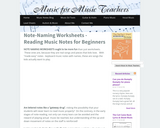
Basic piano pieces that have note names in the heads.
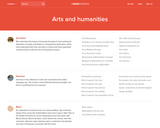
Curriculum and class materials for Music, Art History, History,
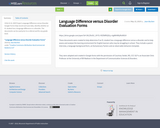
CESA #1 EL OER Project
Language Difference versus Disorder
Google Forms help record and save data, identify whether an EL student has a language difference or a disorder. The documents can be used prior to a referral and for any grade level.

Since 1999, Concordia College & University® of Delaware has made it possible for adult learners to finish their college degree online, in one day, while continuing with their daily lives. Life experience degrees are designed for adult learners who exhibit core competencies of knowledge, skill and experience in some field of interest.
As COVID-19 forces education at all levels online, employers are seeing a significant jump in the number of job applicants who have earned or completed a degree online.

By the end of the lesson, students will:
1-Understand how environmental pressures influenced the evolution of wings and how natural selection resulted in the diversity of bird species that exist today.
2-Understand the mechanics of flight and the anatomical features that provide lift and maneuverability in the air.

Museum of Modern Art Learning Resources. Tools and strategies for engaging with modern and cotemporary art. Download and customize slideshows, worksheets and other resources for use in the classroom or for independent study.
Has follow-up questions, hands- on activities and other opportunities for enrichment beyond the traditional classroom setting.
Utilizes Video, pdf, blogs, E-News, Twitter, FB, Google+ Flickr
You can browse by Themes or by Artists. they have an Advanced Placement Art History Exam, Abstract Expressionism, Cubism, Dada, Design, Investigating Identy, and much more.
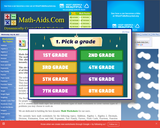
Math-Aides is website that generates worksheets. On the left side of the screen the user will find a list of mathematical topics that ranges from elementary all the way through Algebra II. It is a great place to go when teachers need to create multiple assignments for large groups, or when one assignment is needed for an individual student. This site allows teachers to differentiate their classroom without having to use a word processing package to create individual work pages.

This resource will assist students who are having a difficult time with estimation. The interactive site gives examples of how to estimate and strategies in how to estimate. The site also has printed materials for the students to use for practice. An assessment is also included.
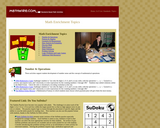
Mathwire is a free math resource. It is aligned with the NCTM Standards. It has activities for students in various grades and various topics.
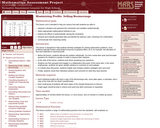
This lesson is designed to help students develop strategies for solving optimization problems. Such problems typically involve using limited resources to greatest effect, as in, for example, the allocation of time and materials to maximize profit.
Before the lesson, students attempt the problem individually. You then review their work and formulate questions for students to answer in order to improve their solutions.At the start of the lesson, students work alone answering your questions.Students are then grouped and engage in a collaborative discussion of the same task. In the same small groups, students are given sample solutions to comment on and evaluate.In a whole-class discussion, students explain and compare solution strategies seen and used.Finally, students revise their individual solutions and comment on what they have learned.
Materials required
Each individual student will need a copy of the task, some plain paper, a calculator, and a copy of the How Did You Work? questionnaire.Each small group of students will need copies of the Sample Responses to Discuss.Graph paper should be kept in reserve and used only when necessary or requested.
Time needed
Approximately 15 minutes before the lesson, a 1-hour lesson, and 10 minutes in a follow-up lesson.

This is an activity for students to demonstrate how an animal or insect can disperse seeds or pollinate a plant by creating a model.

This activity serves to get students active and to teach them to work with all students in their class to acieve group success.
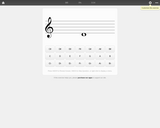
This interactive online tool will quiz your students on naming/identifying notes. It is customizable so you can use treble, bass, grand, alto, or tenor clefs. Great for practice and reinforcing knowledge.